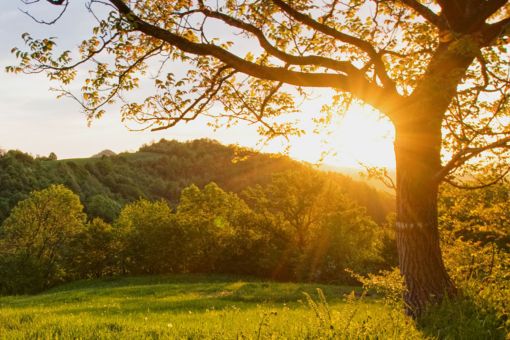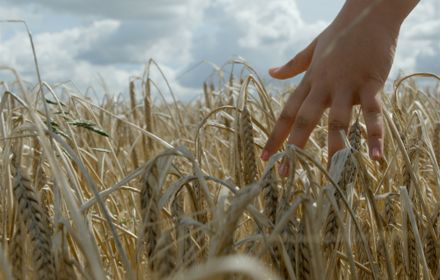The European Commission approved a first-of-its-kind European Union (EU) deforestation-free regulation (EUDR) on 6 December 2022, signaling that the European supply chains of cocoa, coffee, soy, wood, palm oil, rubber, and cattle need to prepare for closer due diligence. This article will explore what the EUDR entails, how it affects your due diligence process and the implementation and financial challenges that come with it.
Background on the EU anti-deforestation regulation
The EU deforestation-free regulation is part of the EU Green Deal[1] and a broader EU strategy[2] to protect the world’s forests. It closely relates to the actions brought forth by the EU Timber Regulation[3] and by the Forest Law Enforcement, Government and Trade (FLEGT) Regulation[4]. While these regulations focus on deforestation caused by illegal timber logging, the new EU deforestation-free regulation covers a broader set of commodities.
Imports to the EU are one of the biggest drivers of global deforestation. Between 1990-2008, EU imports amounted to 36% of deforestation linked to crop products and over 25% of deforestation linked to ruminant livestock products equivalent[5]. The implementation of the EU deforestation-free regulation aims to reduce the impact of deforestation and forest degradation by 71.92 kha, or approximately 100,728 football pitches - of forest per year[6] and reduce CO2 emissions by 31.9 million metric tons per year. Given the scale of impact on global deforestation, the EU deforestation-free regulation is essential in minimizing deforestation, GHG emissions and biodiversity loss globally[7].

What does the EU anti-deforestation regulation entail?
The regulation affects seven specific commodities (cocoa, coffee, soy, palm oil, wood, rubber, and cattle) and their derivatives, as well as products made using these commodities (e.g. leather, cosmetics, chocolate etc.). Over the course of the next two years a review will be carried out, potentially adding additional products to this list[8].
The new Regulation will require any company importing or exporting these commodities from the EU to prove the products are deforestation-free. This applies to any company, regardless of whether they are EU-based or not, and for legal and illegal sources of deforestation in Europe and overseas.
The Regulation defines a product as deforestation-free[9] when the product itself, its ingredients or its derivatives were not produced on land subject to deforestation or forest degradation after the cut-off date of 31 December 2020. This cut-off date has been suggested to minimize disruption to international supply chains.
Once adopted by Member States, the respective authorities for each Member State are responsible for enforcing the Regulation through inspections and sanctions, where necessary. To support Member States, an online system will be set up to facilitate the exchange of information on products placed on the EU market.
Whether they do it themselves or via expert third parties, companies wishing to import or export these products will be required to perform proper due diligence. The EU deforestation-free regulation suggests including the following three key steps:
- Gather geographic information (i.e. satellite imagery) on the plot of land the commodities were sourced from;
- Assess the risk of non-compliance to the EU deforestation-free regulation; and
- Mitigate risks to negligible levels.
Practical actions in preparation for the EU deforestation-free regulation:
- Analyzing the internal available data (spend analysis) to improve visibility and traceability throughout the value chain;
- Prioritizing (product) categories weighing the importance to the business and the products’ footprint;
- Evaluating compliance of the existing supplier base in accordance with the new Regulation; and
- Optimizing the screening and onboarding process for new suppliers.
Potential challenges for companies
Compliance with the EU deforestation-free regulation could be challenging and costly for companies as it likely means adaptations in different facets. Below are some examples of challenges.
- Sourcing raw material will likely be more challenging due to the current and potential supplier’s ability to comply with the regulation.
- Understanding cost break down and final product margins could become a challenge due to a higher complexity in stock keeping units (SKUs).
- Identifying products and raw materials with the highest environmental impact (pareto[10]) and building implementation plans and due diligence processes for their supply chains must be adaptable to regulatory changes[11].
- Screening the supplier base and (re)developing a Supplier Code of Conduct will be required for the policies to consider the implications of the new Regulation.
- Identifying key technologies (including satellite imagery) and partners to increase evidence-based traceability.
- Auditing the base of suppliers including providing proof with satellite imagery when sourcing from several suppliers or scattered production sites.
Leaving no one behind (LNOB)
In addition to the procurement and supply chain challenges, experts are raising questions on the Environmental, Social and Governance (ESG) implications of the Regulation. For example, a report by the Institute for European Environmental Policy[12] points out that the due diligence requirements place greater barriers to market entry for smallholders that don’t have the financial and technological means for compliance. The same report recommends that the EU includes clauses for preferential sourcing from smallholders as well as financial support and technological guidance. This recommendation supports the principle of Leaving No One Behind (LNOB) as proposed in the 2030 Agenda of the UN Sustainable Development Goals (SDGs) and adopted by the EU[13].
Another concern is the risk of production moving to other types of wooded habitats such as savannahs and scrubland. This is not only an environmental risk that needs to be addressed but also a governance challenge for the implementation of the EU deforestation-free regulation.
How does KPMG address these challenges with its clients?
KPMG’s Sustainability, Procurement & Supply Chain, and Risk & Regulatory teams can support your organization in understanding the potential impact of the EU Deforestation-Free Regulation and how to prepare for it. We have a multi-disciplinary team of experts ready to assist with baseline assessments, strategic insights and roadmap definition, operationalize measures and identifying key partners and technologies to increase transparency and traceability of your company’s commodities.
Reach out to us for a tailored approach for your business and supply chain needs.
- Green Deal: EU agrees law to fight global deforestation and forest degradation driven by EU production and consumption (European Commission, 2022).
- The EU strategy is outlined in a 2019 communication from the European Commission titled Stepping up EU Action to Protect and Restore the World’s Forests (European Commission, 2019).
- Regulation (EU) No 995/2010 of the European Parliament and of the Council of 20 October 2010 laying down the obligations of operators who place timber and timber products on the market (European Parliament, 2013)
- Communication from the Commission to the Council and the European Parliament – Forest law enforcement, governance and trade (FLEGT) – Proposal for an EU action plan (European Commission, 2003).
- The impact of EU consumption on deforestation: Comprehensive analysis of the impact of EU consumption on deforestation (European Union, 2013).
- The State of the World’s Forests report 2020 estimates a global deforestation rate of 10,000 kha per year mainly driven by production of cattle, oil palm and soya (FAO, 2020).
- Proposal for a regulation of the European Parliament and of the council on the making available on the Union market as well as export from the Union of certain commodities and products associated with deforestation and forest degradation and repealing Regulation (EU) No 995/201 (European Commission, 2021)
- Council and Parliament strike provisional deal to cut down deforestation worldwide (Council of the EU, 2022).
- This definition is based on the definition of deforestation-free as stated in the EU timber regulation which, with the adoption of the EU deforestation-free regulation, will be repealed.
- Securing the position of smallholders in zero-deforestation supply chains: An assessment of the potential impact of the EU Deforestation-free supply chains Regulation on smallholder farms (Institute for European Environmental Policy, 2022).
- The EU Commission is considering expanding the scope beyond forests to also wooded land, land with high carbon storage and land of biodiversity value.
- Securing the position of smallholders in zero-deforestation supply chains: An assessment of the potential impact of the EU Deforestation-free supply chains Regulation on smallholder farms (Institute for European Environmental Policy, 2022).
- The implementation of the 2030 Agenda’s principles of ‘leaving-no one-behind’ and ‘addressing the needs of those furthest behind first’ in the EU’s development policy (European Union, 2022).



